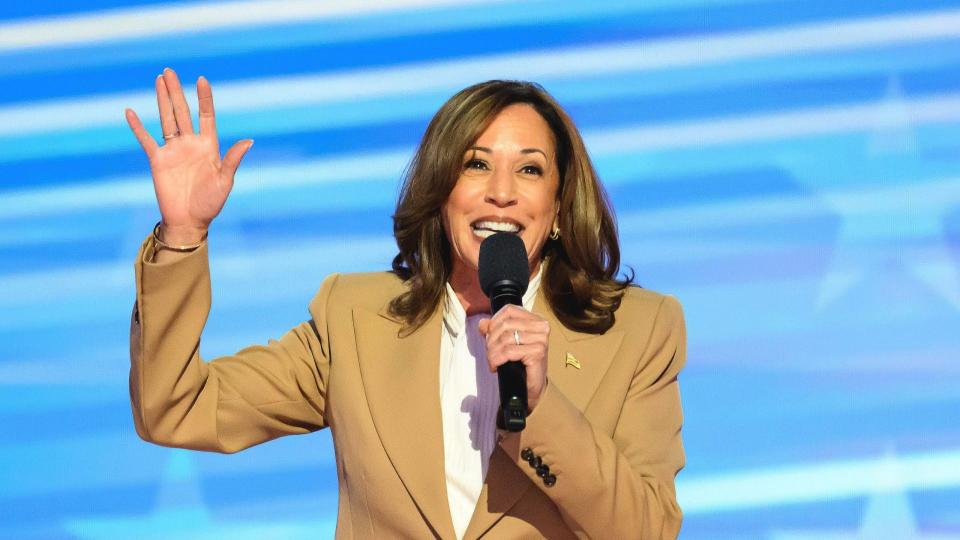
Vice President Kamala Harris recently dropped a bombshell that has parents everywhere perking up their ears: a plan to cap child-care costs at 7% of a family’s income. Sounds like a dream, right? But as with anything in politics, there’s more to this story than meets the eye.
Read More: I’m an Economist — Here’s My Prediction for Social Security If Kamala Harris Wins the Election
Find Out: 9 Things You Must Do To Grow Your Wealth in 2024
Let’s break it down and see what the experts have to say about this potentially game-changing proposal.
Also see what Harris’ “opportunity economy” might look like.
Earning passive income doesn’t need to be difficult. You can start this week.
What’s the Big Idea?
At an event in Philadelphia with the National Association of Black Journalists, Harris announced her intention to limit child-care costs for working families to 7% of their income.
“My plan is that … no working family should pay more than 7% of their income in child care,” she said.
Why? Well, as Harris puts it, “When you talk about the return on that investment, allowing people to work, allowing people to pursue their dreams in terms of how they want to work, where they want to work, benefits us all.”
Discover More: 5 Things You Should Stop Wasting Money on if Kamala Harris Wins in November, According to Experts
Hasn’t This Been Promised Before?
If this sounds familiar, you’re not experiencing déjà vu. Adnan Rasool, associate professor at the University of Tennessee at Martin, reminds us.
“This is an original promise by the Biden administration, and it was supposed to work through the child tax credit being increased and made permanent,” he explained. “This was part of the legislative agenda after the American Rescue Plan passed. Now VP Harris is bringing it back and really pitching it with the updated version that promises $6,000 for the first year for a newborn with an extended child-care credit.”
So, it’s not exactly a new idea, but rather a renewed push on an earlier promise.
The Good News: Potential Game Changer for Families
Chris Bennett, CEO and founder of child-care platform Wonderschool, sees the potential in Harris’ proposal.
“While specific details for achieving this goal or how she’d pay for such a measure have yet to be shared,” he said, “her overarching plan’s promise will enable more accessible and affordable child care for U.S. families.”
Rasool adds some context to why this could be such a big deal.
“In a country where families spend a significant amount of money on child-care costs, sometimes up to 20% of their household income, the notion that max child-care costs can be capped at 7% through government support will fundamentally put more money in the pockets of average Americans,” he said. “The proposals address a serious pain point for middle class Americans.”
It Takes a Village (or Maybe a Congress)
Before you start planning how to spend all of that money you’ll save on child care, there are some hurdles to consider. Thomas Brock, CFA and expert with annuity.org, said putting the plan into action takes more than just the president.
“Implementing this policy would require Congressional approval and significant federal funding to become law,” he said.
The point: Turning a campaign promise into actual policy can be a long and winding road.
Help More by Thinking Local
Bennett offers an interesting perspective on how to make this plan more feasible.
“One idea that would help support Harris’ plan is to have states invest in opening more home-based child-care programs and invest in early child-care technology, which would increase accessibility for families and at the same time improve local economies by creating more sustainable small businesses,” he said.
He said this approach could have far-reaching benefits – that opening more child-care centers would boost the economy and allow families to pay less for child care.
“Our data has shown that each child-care provider serves as an economic multiplier for the local economies,” he explained. “Every child-care slot created garners $27,000 to $42,000 in economic gains, improving the lives of hundreds of people in the local communities over an extended period of time.”
Editor’s note on election coverage: GOBankingRates is nonpartisan and strives to cover all aspects of the economy objectively and present balanced reports on politically focused finance stories. You can find more coverage of this topic on GOBankingRates.com.
More From GOBankingRates
This article originally appeared on GOBankingRates.com: Could Kamala Harris Limit Your Child Care to 7% of Your Income? Experts Explain
